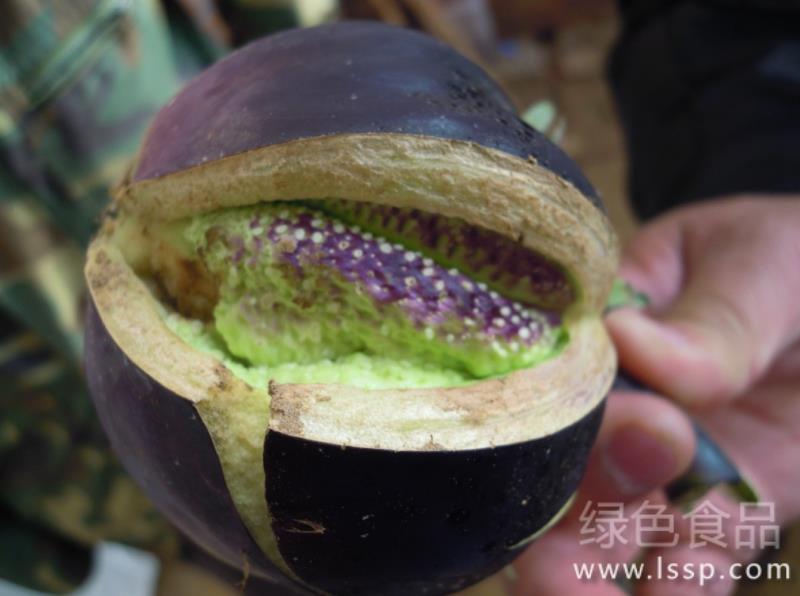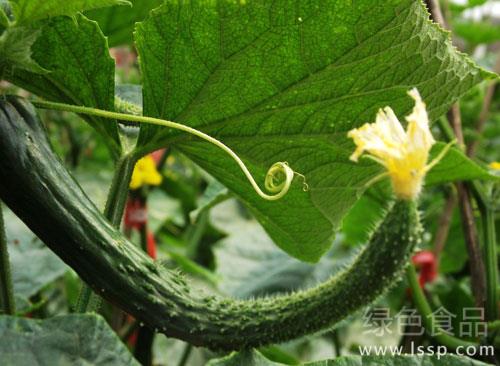Eggplant cracking affects appearance and value how to prevent eggplant cracking
The eggplant is cracked in summer, the seeds are exposed, and the eggplant is no longer inflated. The yield and commodity value of eggplant with serious fruit cracking are seriously threatened. Eggplant cracks, some due to uneven watering. In the early stage of eggplant development, the soil was dry, resulting in the Lignification of eggplant skin. in the later stage, in the event of heavy rain or too much watering, eggplant expanded rapidly, but the eggplant skin could not grow accordingly, and burst. But most eggplants crack because of lack of calcitonin. There are 5 reasons for calcium deficiency in eggplant:

Eggplant cracking
1. Soil is deficient in calcium. In particular, eggplant continuous cropping plots, do not pay attention to the application of calcium fertilizer, resulting in calcium deficiency. This phenomenon is more prominent in greenhouse and greenhouse.
2. Overwatering or heavy rain leaching. Available calcium in the soil is washed away, resulting in calcitonin deficiency. When it is rainy in summer, it happens seriously.
3. Too much nitrogen fertilizer is applied in the soil. Excessive use of nitrogen fertilizer leads to excessive accumulation of ammonium nitrogen and inhibition of calcium absorption.
4. Disturbance of water cycle in eggplant. There are two situations: first, the soil is dry and lack of water, and calcium can not be absorbed; second, after heavy rain or excessive watering in summer, the air humidity is extremely high, which inhibits the transpiration of eggplant, and water and calcium can not be absorbed by the root system.
5. In the later stage of growth, due to negligent management, serious diseases and insect pests, especially eggplant infected by Verticillium wilt, Fusarium wilt, root rot, root-knot nematode and blight, as well as excessive yield and plant aging, the absorption function of eggplant root system decreased, resulting in calcium deficiency.
Calcium deficiency in summer is mainly caused by soil calcium deficiency, heavy rain leaching, excessive nitrogen fertilizer, excessive air humidity, serious diseases and so on.
The measures to prevent the crack at the top of eggplant are as follows:
⑴ application of calcium fertilizer: application of calcium fertilizer with high calcium content such as ammonium, calcium and magnesium
⑵ proper watering: timely watering during drought, but not too much. Drain waterlogging in time on rainy days to prevent flooding.
⑶ strengthen management: in addition to controlling diseases and insect pests, natural brassine solution is sprayed every 20 days to promote eggplant root growth and development and improve absorptive capacity.
⑷ extra-root fertilization: during the rainy season with high air humidity, 0.3% ammonium-calcium-magnesium solution was used for eggplant root topdressing once every 3-7 days.
Related
- Fuxing push coffee new agricultural production and marketing class: lack of small-scale processing plants
- Jujube rice field leisure farm deep ploughing Yilan for five years to create a space for organic food and play
- Nongyu Farm-A trial of organic papaya for brave women with advanced technology
- Four points for attention in the prevention and control of diseases and insect pests of edible fungi
- How to add nutrient solution to Edible Fungi
- Is there any good way to control edible fungus mites?
- Open Inoculation Technology of Edible Fungi
- Is there any clever way to use fertilizer for edible fungus in winter?
- What agents are used to kill the pathogens of edible fungi in the mushroom shed?
- Rapid drying of Edible Fungi



